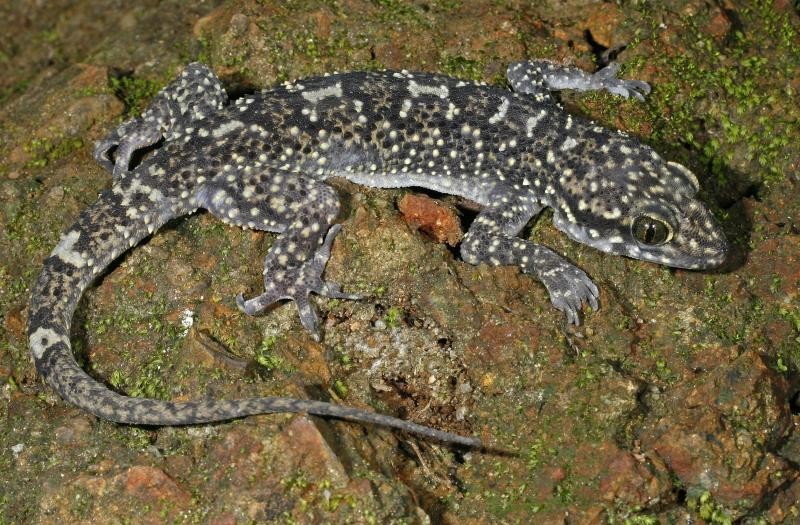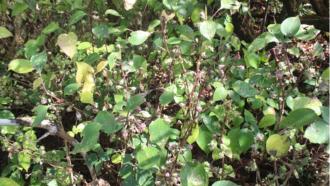
The Western Ghats, a UNESCO World Heritage site, and a biodiversity hotspot, is home to nearly 225 species of reptiles. Of these, more than 60% are found only in these hills and nowhere else in the world. Even to this day, scientists are on the lookout for those lurking species of amphibians and reptiles and hence, the news of the discovery of a new species, though exciting, isn't too surprising! A new addition to this list of endemic reptiles is a rock-dwelling gecko named Hemidactylus paaragowli, discovered in the hills of Kerala.
The discovery, made by researchers from the Indian Institute of Science (IISc), Bengaluru, and the Bombay Natural History Society (BNHS), Mumbai, is published in the journal Zootaxa. The study was funded by the Council for Scientific and Industrial Research (CSIR), Critical Ecosystem Partnership Fund (Western Ghats), the DBT-IISc Partnership Programme and the Ministry of Environment and Forests (MoEF).
The rock-dwelling gecko, found in the mid-elevational regions of the Agasthyamalai and the Devarmalai hills of Kerala, is named Hemidactylus paaragowli—derived from ‘paara’, meaning rock in Tamil, and ‘gowli’, meaning gecko in Malayalam. The researchers say that the new species is closely related to Hemidactylus acanthopholis, another recently described large bodied endemic gecko from the eastern slopes of the southern Western Ghats.
Geckos belonging to the genus Hemidactylus have a small to large body and are found in many types of ecosystems around the world. They are one of the most diverse groups of geckos, widespread in the tropics. In the Western Ghats, scientists have so far identified about 15 species of geckos belonging to this genus. Individuals of this genus have distinct digits, feebly webbed fingers, and toes with two rows of lamellae (membranous tissues on the underside), giving each finger/toe a leaf-like appearance. The fingers and toes have claws that are bent angularly and rise from the ends of the wider portion of the digits.
Individuals of the newly discovered H. paaragowli are distinct from other members of its groups as they have about 22–24 longitudinal rows of relatively regularly arranged, sub trihedral, weakly keeled, striated tubercles or protuberances in the middle part of their body. They also have 9–11 membranous tissues on the first digit and 10–12 membranous tissues on the fourth digit. The tail has transverse series of four enlarged tubercles/protuberances on each tail segment, and there are about 10–12 femoral pores (secretory glands that release chemicals to attract mates) on each side of the thigh separated by 16–18 scales without pores. The gecko also has 11–13 supralabials (scales on the upper jaw) and 9–10 infralabials (scales on the lower jaw). Also, both males and females of the species look very similar to each other. However, the difference in their size needs to be studied in detail, say the researchers.
How did the researchers discover the new gecko?
“This gecko was first spotted by Dr S. P. Vijayakumar, a postdoctoral fellow at the National Centre for Biological Sciences, during one of his field expeditions in the Achankovil forests of southern Western Ghats. We discovered multiple individuals during subsequent field visits to the same region”, recollects Saunak Pal, a scientist at BNHS and one of the authors of the study. “H. paaragowli looked like no other gecko we had seen earlier, and there were no records of large Hemidactylus from that region—a fact that intrigued us to study this species in more detail”, he adds.
The researchers are now trying to understand the spread of these geckos in the Western Ghats.
“Currently, this species is known only from some sites in the forests of southern Kerala. In spite of our fieldwork in the northern regions, we were unable to locate any more populations of this gecko”, says Mr. Pal.
Previous studies on the classification and nomenclature of Hemidactylus species were primarily based on appearance traits like the structure, colour, pattern of the markings and their size, collectively called morphology. In this study, the researchers have used both morphological data and analysis of DNA to distinguish the new species and identify its close relationship to other large-bodied, Hemidactylus species from India and Sri Lanka. DNA analyses also explain the evolutionary history and relationship among different groups of organisms.
In the recent past, several new species of the Hemidactylus genus, including H. satarensis, H. graniticolus, H. acanthopholis, and H. vanam, all from the Western Ghats, have been discovered. “Within the past couple of years, at least five new species have been described from this group. Our discovery signifies that in spite of their large size, these geckos remain poorly studied and their diversity underestimated”, remarks Mr. Pal, adding that further studies may show up more such discoveries.






